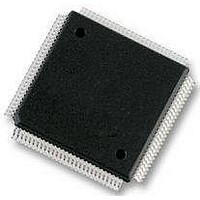MC9S12E128CPV Freescale Semiconductor, MC9S12E128CPV Datasheet - Page 320

MC9S12E128CPV
Manufacturer Part Number
MC9S12E128CPV
Description
Microcontrollers (MCU) 16 Bit 16MHz
Manufacturer
Freescale Semiconductor
Datasheet
1.MC9S12E128CPV.pdf
(606 pages)
Specifications of MC9S12E128CPV
Data Bus Width
16 bit
Program Memory Type
Flash
Program Memory Size
128 KB
Data Ram Size
8 KB
Interface Type
SCI, SPI
Maximum Clock Frequency
25 MHz
Number Of Programmable I/os
92
Number Of Timers
16 bit
Operating Supply Voltage
3.135 V to 5.5 V
Maximum Operating Temperature
+ 85 C
Mounting Style
SMD/SMT
Package / Case
LQFP-112
Minimum Operating Temperature
- 40 C
On-chip Adc
10 bit
On-chip Dac
8 bit, 2 Channel
Lead Free Status / Rohs Status
No RoHS Version Available
Available stocks
Company
Part Number
Manufacturer
Quantity
Price
Company:
Part Number:
MC9S12E128CPVE
Manufacturer:
Freescale Semiconductor
Quantity:
10 000
- Current page: 320 of 606
- Download datasheet (4Mb)
Chapter 10 Inter-Integrated Circuit (IICV2)
In slave transmitter routine, the received acknowledge bit (RXAK) must be tested before transmitting the
next byte of data. Setting RXAK means an 'end of data' signal from the master receiver, after which it must
be switched from transmitter mode to receiver mode by software. A dummy read then releases the SCL
line so that the master can generate a STOP signal.
10.7.1.7
Arbitration Lost
If several masters try to engage the bus simultaneously, only one master wins and the others lose
arbitration. The devices which lost arbitration are immediately switched to slave receive mode by the
hardware. Their data output to the SDA line is stopped, but SCL continues to be generated until the end of
the byte during which arbitration was lost. An interrupt occurs at the falling edge of the ninth clock of this
transfer with IBAL=1 and MS/SL=0. If one master attempts to start transmission while the bus is being
engaged by another master, the hardware will inhibit the transmission; switch the MS/SL bit from 1 to 0
without generating STOP condition; generate an interrupt to CPU and set the IBAL to indicate that the
attempt to engage the bus is failed. When considering these cases, the slave service routine should test the
IBAL first and the software should clear the IBAL bit if it is set.
MC9S12E128 Data Sheet, Rev. 1.07
320
Freescale Semiconductor
Related parts for MC9S12E128CPV
Image
Part Number
Description
Manufacturer
Datasheet
Request
R
Part Number:
Description:
Manufacturer:
Freescale Semiconductor, Inc
Datasheet:
Part Number:
Description:
Manufacturer:
Freescale Semiconductor, Inc
Datasheet:
Part Number:
Description:
Manufacturer:
Freescale Semiconductor, Inc
Datasheet:
Part Number:
Description:
Manufacturer:
Freescale Semiconductor, Inc
Datasheet:
Part Number:
Description:
Manufacturer:
Freescale Semiconductor, Inc
Datasheet:
Part Number:
Description:
Manufacturer:
Freescale Semiconductor, Inc
Datasheet:
Part Number:
Description:
Manufacturer:
Freescale Semiconductor, Inc
Datasheet:
Part Number:
Description:
Manufacturer:
Freescale Semiconductor, Inc
Datasheet:
Part Number:
Description:
Manufacturer:
Freescale Semiconductor, Inc
Datasheet:
Part Number:
Description:
Manufacturer:
Freescale Semiconductor, Inc
Datasheet:
Part Number:
Description:
Manufacturer:
Freescale Semiconductor, Inc
Datasheet:
Part Number:
Description:
Manufacturer:
Freescale Semiconductor, Inc
Datasheet:
Part Number:
Description:
Manufacturer:
Freescale Semiconductor, Inc
Datasheet:
Part Number:
Description:
Manufacturer:
Freescale Semiconductor, Inc
Datasheet:
Part Number:
Description:
Manufacturer:
Freescale Semiconductor, Inc
Datasheet:











